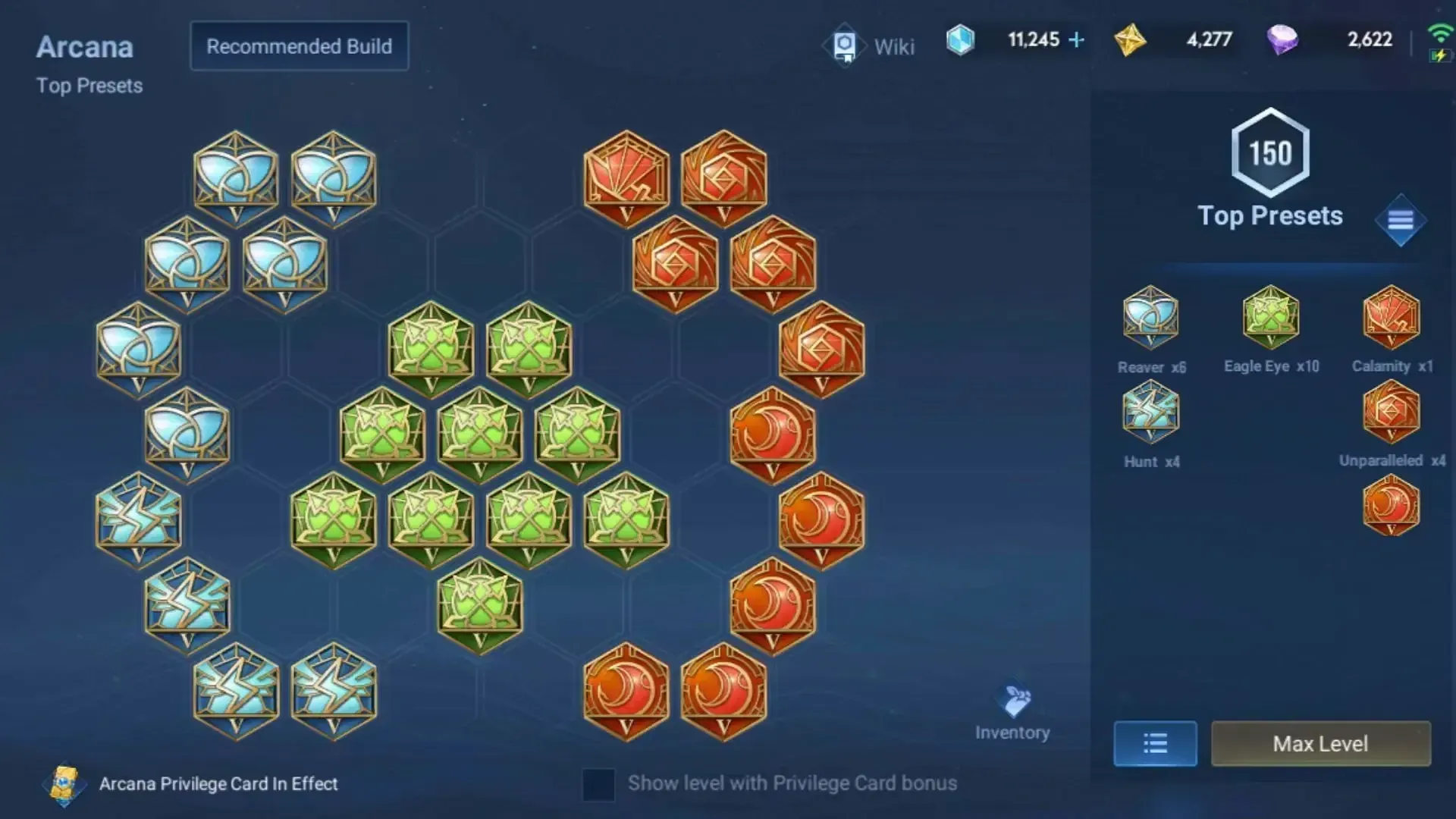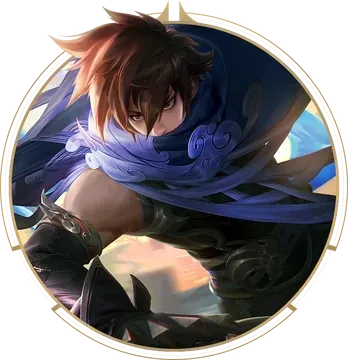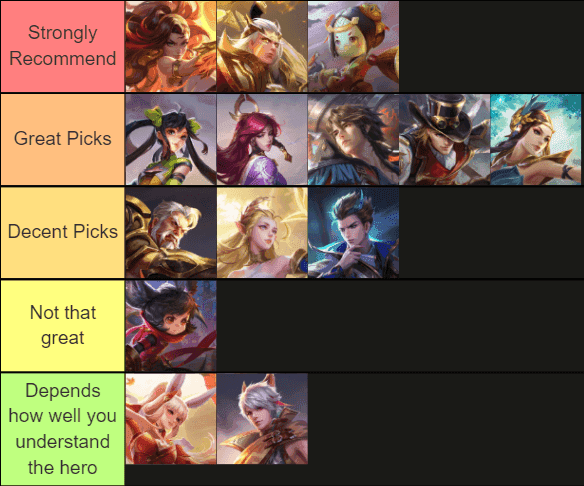Master Honor of Kings with our comprehensive 2025 build guide featuring optimal items, arcana configurations, and skill orders for all hero roles. Updated with Season 11 meta changes, pro player strategies, and counter-building techniques to dominate ranked matches.
Honor of Kings Build Fundamentals 2025
Here's the thing about builds in Honor of Kings—they're not just about slapping together expensive items and hoping for the best. You've got three moving parts to juggle: items, arcana, and skill orders. And honestly? Most players mess up at least one of these.
Season 11 dropped some serious changes back in June. The jungle tunnels alone boosted rotation speeds by 15-20%, which completely shifted how we think about mobility builds. But here's what really matters—those critical stat breakpoints that separate decent players from the ones climbing ranks.
Take Physical Pierce, for instance. Hit that sweet spot of 64+ and you're dealing near-true damage to heroes sitting at 15-25 base armor. That's not just theory crafting—that's the difference between tickling tanks and actually threatening them. Mages? They need those 10% cooldown reduction thresholds to spam abilities effectively. Supports require 1162+ Max Health for proper utility scaling.

The math gets interesting with damage reduction. The formula (Defense / (Defense + 100)) creates this multiplicative stacking effect that heavily favors penetration builds. 100 Defense gives you 50% reduction, but bump that to 200 and you're only reaching 67%. Diminishing returns hit hard.
Season 11 equipment changes hit marksmen particularly hard. Daybreaker's attack speed got nerfed from 35% to 30%—and trust me, heroes like Alessio and Flowborn felt that immediately. On the flip side, slow effects from Frozen Breath (15%-30%) and Pure Sky (15%-30%) suddenly became more valuable for mobile heroes like Lam, whose Wavebreaker provides +60 movement speed for 3 seconds.
Quick note for serious players: honor of kings pro build bundle tokens from BitTopup can fast-track your access to advanced configurations. Their pricing stays competitive, and the 24/7 support actually responds when you need it.
Essential Items Guide for Every Role
Let's cut through the noise. Core items aren't suggestions—they're requirements that define what your hero can actually do in fights.
Tanks live or die by Resistance Boots and Dominance Ice. CC resistance and area denial aren't luxuries when you're the one walking into five enemies. Assassins need Boots of Dexterity and Pure Sky for mobility and penetration—without these, you're just a squishy melee hero with delusions of grandeur.
Marksmen? Eternity Blade and Daybreaker for critical scaling. Mages prioritize Fleeting Time and Holy Grail for ability spam. These aren't meta choices—they're mathematical necessities.
Alessio's Dreamforged-Tempest deserves special mention. 45-90 physical pierce on-hit plus 35% attack speed for 5 seconds after skill usage. That 3400g investment creates legitimate mid-game power spikes, especially when paired with Shadow Ripper's critical amplification. The airborne mechanics synergy is just beautiful when executed properly.

Tank itemization follows a strict hierarchy: Resistance Boots for CC immunity first, Shield of the Lost for magic resistance, then Twilight Armor for physical mitigation. Arthur's 54.2% win rate using this exact core proves the concept—area denial and damage amplification through proper defensive scaling.
Marksman builds target specific thresholds: 70%+ critical rate with 2.0+ attack speed. Loong's optimal build enables that ridiculous Infinite Vastness ultimate—4.5 seconds of flight with increased range. Marco Polo requires similar thresholds but prioritizes Chain Reaction stacks, dealing true damage at 10 stacks while shredding armor. Different execution, same mathematical foundation.
Optimal Arcana Sets and Configurations
Level 5 arcana provide 15-20% of your total hero power through just 30 slots. Most players treat this like an afterthought. Big mistake.

Key options break down like this: Mutation (+2 physical attack, +3.6 physical pierce), Eagle Eye (+0.9 physical attack, +6.4 physical pierce), Hunt (+1% attack/movement speed). The numbers look small, but they add up fast across 10 slots.
Red arcana determines your primary damage type. Calamity provides +1.6% critical rate per slot—that's 16% total with 10 slots for marksmen. Nightmare offers +4.2 magical attack with +2.4 magical pierce for mages. Mutation balances attack power with penetration for assassins who need both.
Blue arcana focuses on survivability, and this is where I see the most mistakes. Hunt provides +1% attack and movement speed for kiting—essential for marksmen. Reaver offers +1.6% physical lifesteal for sustained trades. Longevity grants +75 max health per slot, reaching 750 additional health with full investment. That's massive for supports.
Green arcana completes your builds. Eagle Eye's +6.4 physical pierce per slot totals 64 penetration with 10 slots—hitting that critical breakpoint for true damage we discussed earlier. Mind's Eye provides equivalent magical pierce. Compassion offers +1% cooldown reduction per slot.
Budget strategy? Prioritize Eagle Eye (Green) for penetration, Hunt (Blue) for mobility, Mutation (Red) for balanced offense. This 30-slot investment provides 70-80% of maximum effectiveness at significantly lower cost. Perfect for climbing without breaking the bank.
For competitive arcana access, honor of kings meta heroes recharge through BitTopup enables instant upgrades. Their platform stays secure with competitive exchange rates and instant delivery across all regions.
Skill Order Optimization Strategies
Ultimate abilities get priority at levels 6, 11, 15. Always. Maximum scaling isn't negotiable.
Primary damage or utility skills follow, then secondary abilities fill remaining points based on what you're actually facing. Cookie-cutter skill orders lose games.
Lam's optimization centers on Space Split (Skill 2) for cooldown resets via basic attacks. Master this and you get infinite combos with proper mark management. Optimal sequence: Wavebreaker engagement → Space Split damage → basic attack resets → Death From Below ultimate. Level 2 gank potential that actually works.

Marksman optimization balances farming efficiency with team fight readiness. Alessio prioritizes Ultimate > Skill 1 > Skill 2 for airborne execution. Flowborn emphasizes Skill 1 for Flow stacks before maximizing Skill 2 for enhanced basic attacks. Power spikes occur at levels 4, 8, 12 with item completions—plan accordingly.
Angela's optimal sequence maximizes Chaos Cinders (stun) before Scorching Barrage (burst) and Blazing Brilliance (shield). That 53.3% win rate comes from proper combo execution, not random button mashing.
Tank skill orders emphasize crowd control duration over damage. Arthur's 54.2% win rate performance comes from maximizing area denial, not trying to be a discount assassin.
Tank Hero Build Strategies
Tank builds prioritize CC resistance, health scaling, and team utility over individual damage. Sounds obvious, but you'd be surprised how many tanks try to build damage items.
Arthur's S-tier build achieves that 54.2% win rate through area denial and damage amplification. Core items provide 1800+ effective health with defensive arcana. Situational additions include Crimson Banner for team buffs and Revitalize for extended engagement sustainability.
Dun represents peak tank performance—S-tier ranking with 33.3% professional pick rate. The survivability focus enables hypercarry protection for heroes like Loong. Optimal builds emphasize health stacking through Longevity arcana (750+ bonus health) with resistance items for multiplicative scaling.
Tank arcana breakdown: Fate (Red) provides +33.7 max health with +2.3 physical defense per slot. That's 337 health and 23 defense total. Harmony (Blue) adds +45 health with regeneration. Vacuity (Green) contributes +37.5 health with 0.6% cooldown reduction.
The math works because of multiplicative scaling—more health makes resistance more valuable, and vice versa.
Assassin and Marksman DPS Builds
DPS builds focus on critical strike scaling, penetration breakpoints, and attack speed thresholds. Assassins prioritize burst with mobility. Marksmen emphasize sustained damage with positioning tools.
Lam's build dominates with 54.9% win rate and 98% professional pick/ban rate. Here's the exact build: Rapacious Bite for lifesteal, Boots of Tranquility for CDR, Axe of Torment for penetration, Pure Sky for mobility, Cuirass of Savagery for crits, Siege Breaker for armor penetration. This enables level 2 ganks with infinite combo potential.
Loong achieves 55.3% win rates with unmatched scaling potential. The build: Boots of Dexterity, Eternity Blade, Daybreaker, Shadow Ripper, Bloodweeper, Sunchaser. This reaches 70%+ critical rate with 2.0+ attack speed. Infinite Vastness ultimate provides 4.5 seconds flight with increased range—absolutely devastating when properly positioned.
Marco Polo hits 53.6% win rates through Chain Reaction mechanics that shred armor and deal true damage at 10 stacks. Build prioritizes attack speed for stack generation while maintaining critical scaling.
Critical optimization targets 60-70% critical rate through items and arcana. Calamity provides 16% base critical rate. Attack speed caps at 2.5, making Daybreaker and Dreamforged-Tempest essential for threshold achievement.
Mage and Support Utility Builds
Utility builds prioritize team enhancement through healing, shielding, crowd control, and map control. Mages focus on ability power scaling with CDR. Supports emphasize utility items and positioning tools.
Daji achieves 54.7% win rates through burst and crowd control: Magic Boots for penetration, Fleeting Time for CDR, Holy Grail for mana, Tome of the Reaper for ability power. Quick elimination through precise combo execution—that's the goal.
Yaria's core includes Magic Boots, Fleeting Time, Holy Grail, plus situational utility items. Verdant Predator ultimate provides true damage shields while amplifying ally damage. Maximum priority for team fight impact.
Da Qiao represents S-tier support through portal positioning and global control. Build emphasizes CDR for Eye of the Whirlpool frequency, enabling constant map pressure and team fight repositioning.
Mage arcana: Nightmare (Red) provides +4.2 magical attack with +2.4 magical pierce per slot—42 ability power and 24 penetration total. Mind's Eye (Green) adds +6.4 magical pierce for breakpoints.
Support arcana: Longevity (Blue) provides +75 max health per slot for 750 total increase. Compassion (Green) offers +1% CDR per slot for 10% total.
Counter-Building and Adaptation
Counter-building requires real-time adaptation based on enemy composition, item progression, and team fight patterns. Successful builds identify enemy win conditions and neutralize primary threats while maintaining core functionality.
Anti-heal itemization counters sustain-heavy compositions featuring Augran, whose healing dominates without proper counters. Witch's Cloak provides magic resistance against ability-based healing. Specific anti-heal items reduce effectiveness by 40-60%.
Armor penetration counters tank-heavy compositions. That 64+ Physical Pierce breakpoint enables near-true damage. Percentage penetration handles high-armor targets. Void Staff provides magical penetration for mages facing magic resistance stacking.
Mobility counters address high-burst compositions through movement speed, dash abilities, and CC immunity. Purify common skill removes debuffs and provides 1.5 seconds CC immunity for escape potential.
The key? Recognize threats early and adapt build order accordingly. Don't just follow cookie-cutter builds blindly.
Meta Builds and Pro Player Strategies
Professional analysis reveals optimal builds through tournament data and win rates. November 2025 tier list features S-tier heroes with 52-55% win rates and 98% professional pick/ban rates.
King's World Cup 2025 (September 15-October 24) provided crucial meta data through its $10M prize pool with 58M viewers. MVP Shadow achieved 8.7 KDA on Lam with 98% pick/ban rate and 67% win rate. Loong maintained 96% presence with 71% win rate. These aren't flukes—they're mathematical advantages.
Current S-tier meta: Augran (55.1% win rate), Lam (54.9%), Loong (55.3%), Daji (54.7%), Yaria (53.8%) with consistent professional presence. These represent optimal build archetypes for ranked climbing.

Rush Down compositions achieve 68% win rates through aggressive early builds featuring Charlotte, Lam, Daji, Marco Polo, Yaria. The strategy prioritizes early power spikes through cost-efficient items, ending games before enemy scaling activates.
Patch 1.10.5 (October 16, 2025) buffed Charlotte movement and Zhou Yu AoE while nerfing Sun Shangxiang ultimate damage (200% to 180%) and Athena CC duration (2.5 to 1.8 seconds). These changes shift priorities toward mobility and sustained damage over burst.
Personal Performance Points (C-SSS ratings) reward optimization through 70-80%+ kill participation, objective control (3+ objectives, 4+ towers), top 2 team damage, and death minimization.
Frequently Asked Questions
What are the most important items to prioritize in early game builds?
Core items by role: tanks need Resistance Boots and Dominance Ice, assassins require Boots of Dexterity and Pure Sky, marksmen build Eternity Blade, mages prioritize Fleeting Time. These provide fundamental capabilities regardless of enemy composition. Everything else is situational.
How do I choose the right arcana configuration for my hero?
Target those critical breakpoints: 64+ Physical Pierce through Eagle Eye (Green) and Mutation (Red), 16% critical rate via Calamity (Red), 1162+ Max Health using Longevity (Blue). Budget priority: Eagle Eye first, then Hunt (Blue), then Mutation (Red). This gives you 70-80% effectiveness without breaking the bank.
Which heroes have the strongest builds for ranked climbing in 2025?
S-tier heroes: Lam (54.9% win rate, 98% pro pick/ban), Loong (55.3%, unmatched scaling), Augran (55.1%, sustain), Daji (54.7%, burst control), Yaria (53.8%, utility support). Consistent performance across all skill levels. Master one from each role.
How should I adapt my build during matches based on enemy composition?
Counter-build by threat type: anti-heal items against Augran, armor penetration against tanks, mobility items against burst assassins, CC immunity against disable teams. Monitor enemy progression and adjust build order accordingly. Don't just follow guides blindly.
What's the difference between core and situational items in builds?
Core items provide essential functionality regardless of composition—Eternity Blade for marksmen, Dominance Ice for tanks. Situational items adapt to specific threats—Witch's Cloak vs magic damage, anti-heal vs sustain. Core first, situational fills remaining slots based on what you're actually facing.
How do professional players optimize their builds for tournament play?
Pros emphasize consistency and team synergy over individual performance. They master 2-3 S-tier heroes per role with standardized builds, adapt to patches immediately, and prioritize team composition synergy. The goal: achieve 70-80%+ kill participation while maintaining top damage metrics and minimizing deaths. Individual glory means nothing if the team loses.

